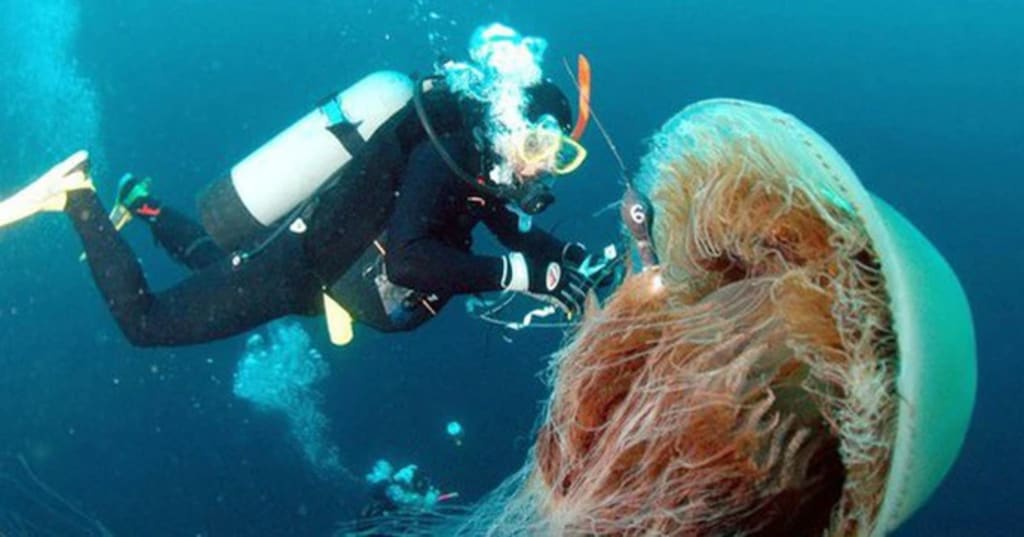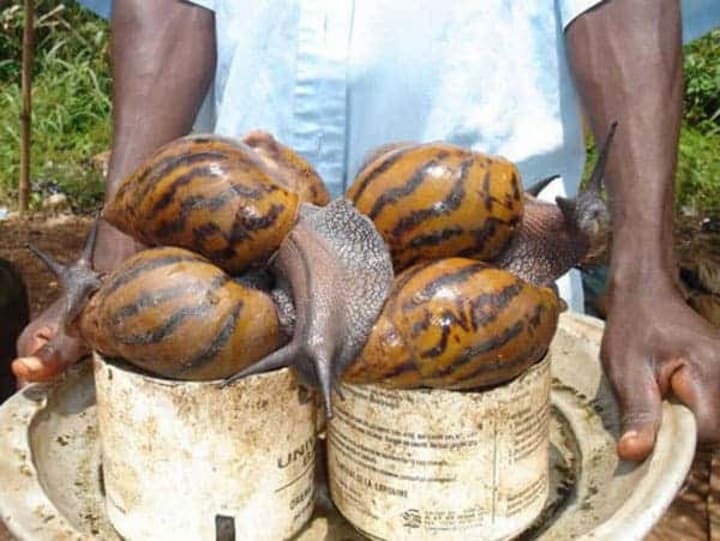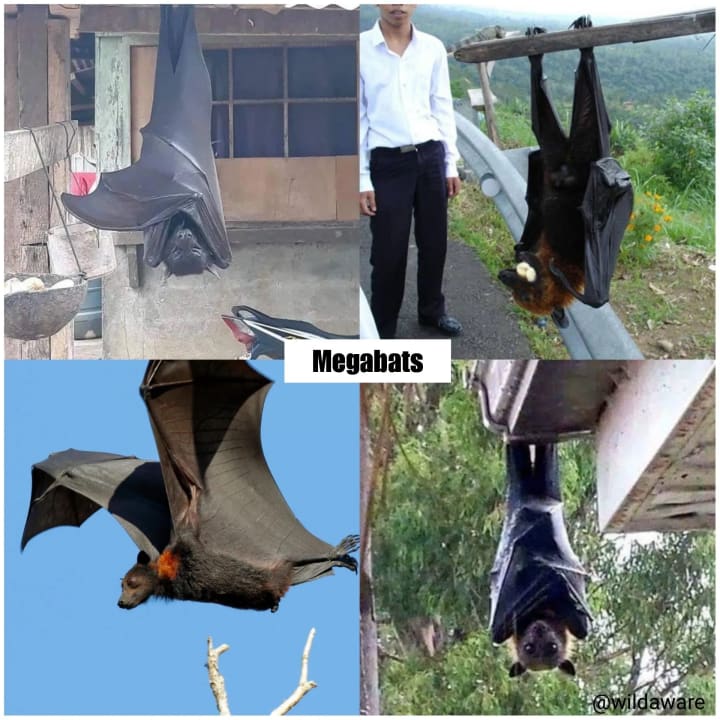
1. Giant African Land Snail
The Giant African Land Snail, sometimes referred to as the Giant Snail, is a colossal gastropod mollusk that can reach lengths exceeding 30 centimeters. Originating from East Africa, this species defies the typical slow-eating stereotype associated with snails. In fact, it holds the title for the largest land snail on Earth.
Not only is its size astonishing, but its appetite is equally impressive. These snails are indiscriminate eaters, devouring almost anything they come across. With a menu encompassing over 500 different plant species, they can transform lush landscapes into barren terrain at an astonishing pace. Their insatiable feeding and prolific reproduction have earned them a reputation as one of the most invasive species worldwide.

2. Chinese Giant Salamander
The Chinese Giant Salamander, Andrias davidianus, is one of the most immense and extraordinary amphibian species on the planet. Originating from Central and Eastern China, it can grow up to 1.8 meters in length and weigh nearly 60 kilograms, making it the largest surviving amphibian species globally.
Historically believed to be a single species, recent research has distinguished three separate species inhabiting South, Central, and East China. One of these newly recognized species, Andrias sligoi, also known as the South Chinese Giant Salamander, is deemed the largest among the three, reaching nearly 2 meters in length.
Unlike many other amphibians, the Chinese Giant Salamander boasts remarkable longevity, with some individuals living well beyond typical human lifespans. In the wild, their lifespan can extend up to 30 years, and in captivity, they've been known to survive for up to 60 years. These varying lifespans are influenced by factors such as diet and living conditions. While their wild counterparts must fend for themselves and face numerous threats, captive Chinese Giant Salamanders benefit from medical care and protection against predators.

3. Giant Fruit Bat
Not all fruit bats are small in stature. In fact, the largest among them, often called flying foxes, possess wingspans that can reach an impressive 1.5 to 1.7 meters, enough to envelop an average-sized human. With keen eyesight, they rely on vision for flight and foraging. The Giant Fruit Bat, in particular, can be found in the forests of Maitum, located in the southern Philippines.
Despite their somewhat intimidating appearance, these bats are far from menacing. Their diet primarily consists of fruits, leaves, and their main food source, figs. They can fly up to 40 kilometers each night in search of sustenance. The majority of their daytime hours are dedicated to rest, much like their nocturnal counterparts.
The Giant Fruit Bat is currently protected by international agreements and is listed among endangered species. Despite international legal safeguards, illegal hunting and trading continue to pose significant threats. From 1986 to 2016, their population declined by more than 50%.

4. Giant Freshwater Stingray
Not all formidable stingrays inhabit the deep ocean; some thrive in freshwater habitats, particularly in the Mekong River.
The Giant Freshwater Stingray, or Mekong Stingray, belongs to the Dasyatidae family within the Myliobatiformes order and is distributed throughout the Indochinese Peninsula and Borneo Island in Indonesia. With a wingspan exceeding 2.2 meters, these aquatic behemoths rank among the largest freshwater fish globally. Their enigmatic flat bodies enable them to bury themselves within riverbeds, disappearing from view. Regrettably, these extraordinary creatures face threats from overfishing and habitat degradation resulting from deforestation, land development, and dam construction. Adult Mekong Stingrays can weigh between 500 and 600 kilograms.

5. Nomura's Jellyfish
When we think of jellyfish, we often envision small, delicate creatures with translucent bodies. However, the vast oceans harbor numerous giant jellyfish species, and Nomura's Jellyfish is one of the largest.
Adult Nomura's Jellyfish can surpass the average height of a human. With a diameter of approximately 2 meters and a weight exceeding 220 kilograms, these colossal jellyfish mainly inhabit the waters between China and Japan, particularly the Yellow Sea and the East China Sea. Historically, they resided primarily in deeper ocean regions, but recent years have witnessed changes in their behavior due to ecological disruptions and rising global temperatures.

Notably, Nomura's Jellyfish is not only gigantic but also highly venomous. Accidental contact with their tentacles can pose severe threats to human life.
Since 2005, these massive jellyfish have wreaked havoc on the Japanese fishing industry. They inadvertently attack fishing vessels, causing significant disturbances in the marine food chain.





Comments (1)
Test is not accepting comments at the moment
Want to show your support? Send them a one-off tip.